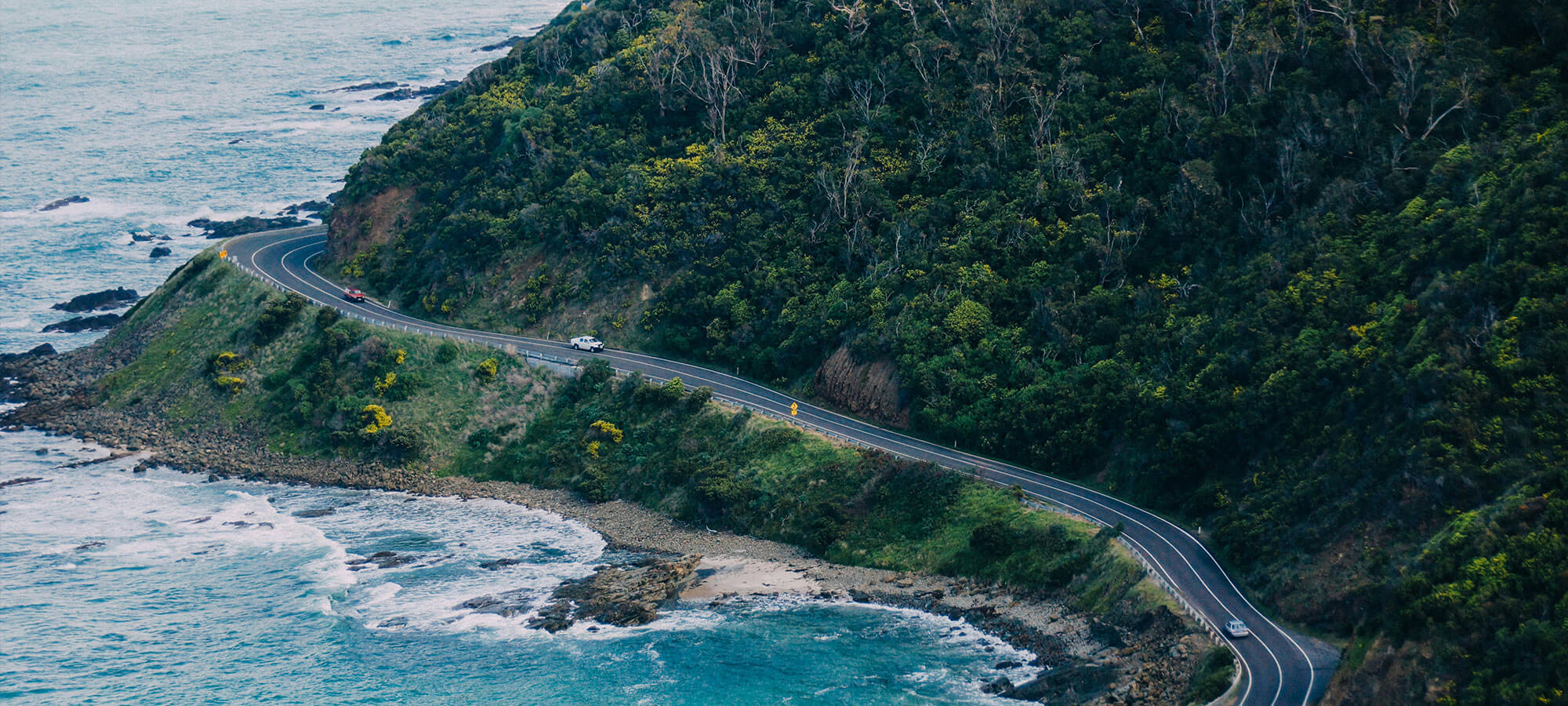
Melbourne could easily be mistaken for a European city due to its similarities with Old Continent cities: trendy cafes, restaurants, and European architecture. But its distinctive street art reminds us of the uniqueness of this charming city where living is easy, but where it’s also possible to party until the early hours!
Melbourne is full of very interesting tourist spots, especially in the city center:
The Royal Botanic Gardens, located along the Yarra River: These botanical gardens, covering an area of 38 hectares, house over 50,000 plants, most of which are native to Australia, and 12,000 species of animals, including many birds. There’s even a genuine tropical forest area! By visiting these gardens, you’ll learn more about Australian flora. Plus, admission is free.
The State Library of Victoria is also a place worth visiting.
Embark on a cruise along the Yarra River: There are numerous stops, including “Southgate,” “Federation Square,” and “The Docklands,” which are the main stops. You’ll discover the best neighbourhoods of Melbourne like Southbank located on the other side of the river, which is an artistic and cultural district close to the Crown Melbourne Casino.
You’ll also find numerous alleyways where you’ll discover the street art that is so popular in Melbourne.

Melbourne is filled with cool markets.
The most famous, the Queen Victoria Market, opened in 1878 and remains a must-visit for both locals and tourists alike.
The Prahran Market on Commercial Road in South Yarra is another notable market.
There’s also the South Melbourne Market. As the name suggests, it’s located south of Melbourne, between Coventry Street and Cecil Street.
let’s hit the road!
This route, stretching over 240 kilometers from Torquay to Warrnambool, has become a must for backpackers and road trip enthusiasts. Indeed, it offers the opportunity to discover numerous spots and admire postcard-perfect landscapes that only Australia has the secret of.
Torquay is considered one of the ends of the Great Ocean Road and can therefore be your starting point!
We recommend taking a tour of Bells Beach, a famous surfing beach and a stop on the World Surf League Championship Tour. This place is recommended for experienced surfers who want to ride the waves known worldwide! You can also enjoy superb views along the cliff that borders the beach, renowned as a surfing hotspot in Australia.
Anglesea is the next town on the Great Ocean Road route. We recommend taking a walk along the banks of Anglesea.
Aireys Inlet, A stop at Split Point Lighthouse: Split Point Lighthouse is a must-see attraction and stands as a remarkable sentinel on the shipwreck coast.
Lorne is known as a stopover town where bikers stop before hitting the bitumen of the Great Ocean Road.
Kennet River Koala Walk is named as such because, as the name suggests, it is home to a large population of koalas. This place is actually a special spot where the chance to spot koalas is higher than at other sites.
Apollo Bay is a town where it is good to live! In addition to its wide choice of restaurants and notably its famous “pies” from the Apollo Bay Bakery, the town has many other assets.
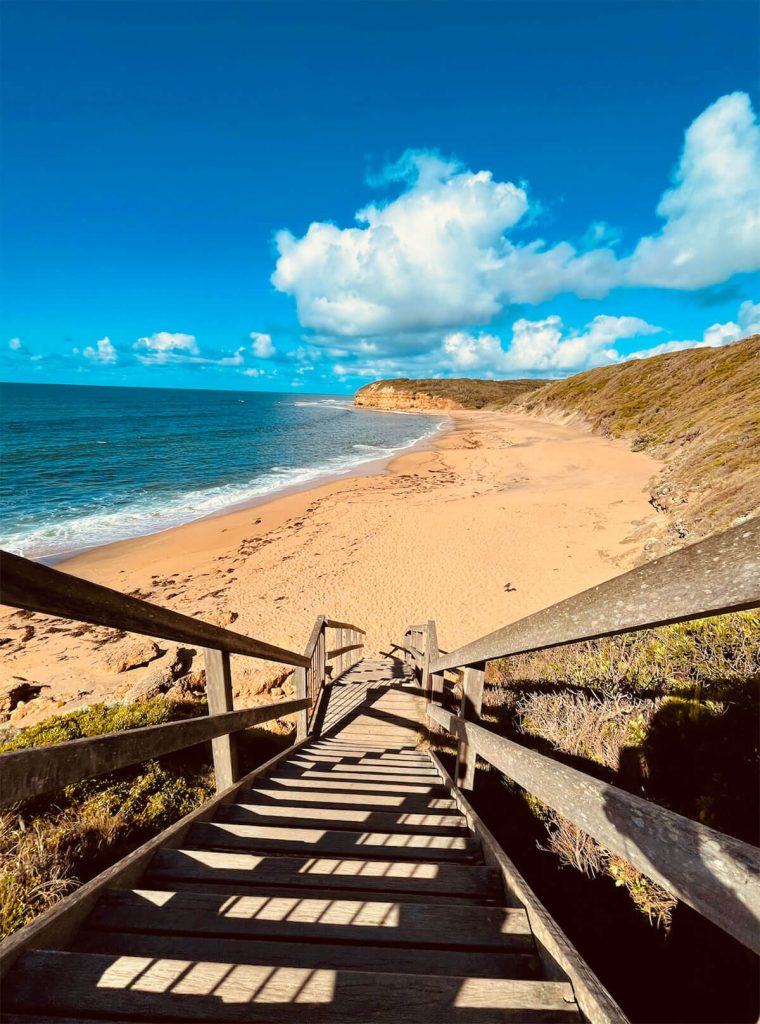
Port Campbell National Park
As one of the most photographed locations in southern Australia, it has surely been even more so since its name changed from The Sow and Pigs to The Twelve Apostles in the 1960s. Of course, the best time will be at sunset for photos that will make many jealous.
For lovers of places with more or less dramatic histories, we recommend taking a stroll to Loch Ard Gorge in Port Campbell National Park.
Numerous hiking trails start from this gorge and lead to other must-see spots on the site: the wreck of the Loch Ard, the Thunder Cave, or the Mutton Bird Island Lookout.
You probably know the English nursery rhyme “London Bridge is falling down.” Well, at the following site, the song has never been more truthful! Before it collapsed, London Bridge was named because its natural shape, caused by erosion, closely resembled a bridge. You can still see the London Arch, but this time from a distant platform!
A must-see lookout: The Grotto. Stairs will take you to a beach-level view with an artificial pool under the cave.
Many walks along the coastal trail are possible at Port Campbell. Park your car at Scenic Lookout and walk to Sunset Lookout. Beautiful viewpoints await.
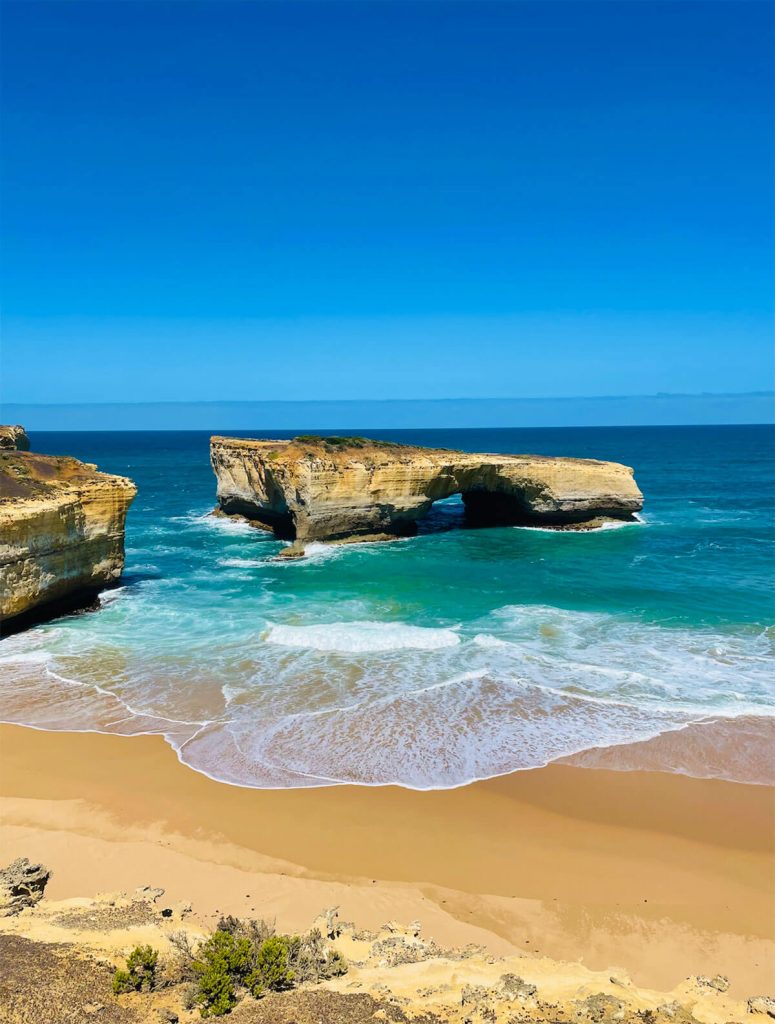
On the Mornington Peninsula, the trend is towards good wine and refined restaurants! Thanks to its renowned vineyards and cultural richness, your meal is often certified 100% local! Wineries abound in this corner of Australia, and producers don’t just stop at the wines that make their success; they also specialize in locally brewed beer.
If you lean more towards outdoor activities, turquoise water beaches like Rye Beach will bring you great joy. For an overview of the peninsula, head to Arthur’s Seat or the Bay of Islands. Cape Schanck is also the perfect place to feel like you’ve reached the end of the Earth.
The village of Sorrento is a great place for breakfast or lunch, a charming little village.
Located 1.5 hours from Melbourne, Phillip Island is an island where you can enjoy surfing beaches as well as the rich and beautiful Australian wildlife and flora that will dazzle you.
Phillip Island is renowned for the parade of its Little Penguins returning home at sunset. But the island is not only the ideal place to see penguins; you can also observe koalas in the trees at the Koala Conservation Reserve. To get closer to our kangaroo and koala friends to feed and pet them, you can visit the Maru Koala and Animal Park. There, or out in the wild, you can interact with wallabies or other echidnas. You’ll understand, Phillip Island is the perfect place to experience Australian wildlife.
You can also admire its flora by taking one of the many walks that showcase the island. Coastal walks, bushwalks, and scenic trails, you won’t be short of choices. For observing the pinnacles, what’s better than the Cape Woolamai Walk, but for whale watching off the coast, you’ll need to take the Pyramid Rock Walk or the Whale Discovery Trail during winter. You can also hop on your bike on some paths shared with pedestrians in the heart of the island.
In terms of landscape, the park couldn’t choose and thus mixes between mountains, beaches, lakes, and characteristic eucalyptus forests of the region. Wilson Promontory also hosts a good number of wombats, also typical of the Australian experience.
The must-sees of the region
In this place, the must-sees are hikes that allow you to explore the full potential of the national park!
Firstly, we recommend the Mount Oberon walk. A 7-kilometer round trip, this path will take you to the summit of the mountain. Once there, you’ll have a breathtaking 360-degree view of Wilson Promontory.
“Lilly Pilly Gully” will not disappoint you! With views of Tidal River and Norman Beach after crossing the famous eucalyptus forests, this hike, paying homage to Australian flora, will allow you to encounter kangaroos, emus, and many other creatures.
For the most motivated hikers: “Tongue Point“, the tip of the peninsula! A 4-hour round trip dotted with lookouts along the coast that offer wonderful panoramas to the end of the land. The experience continues with the spectacle of waves crashing against the rocks.
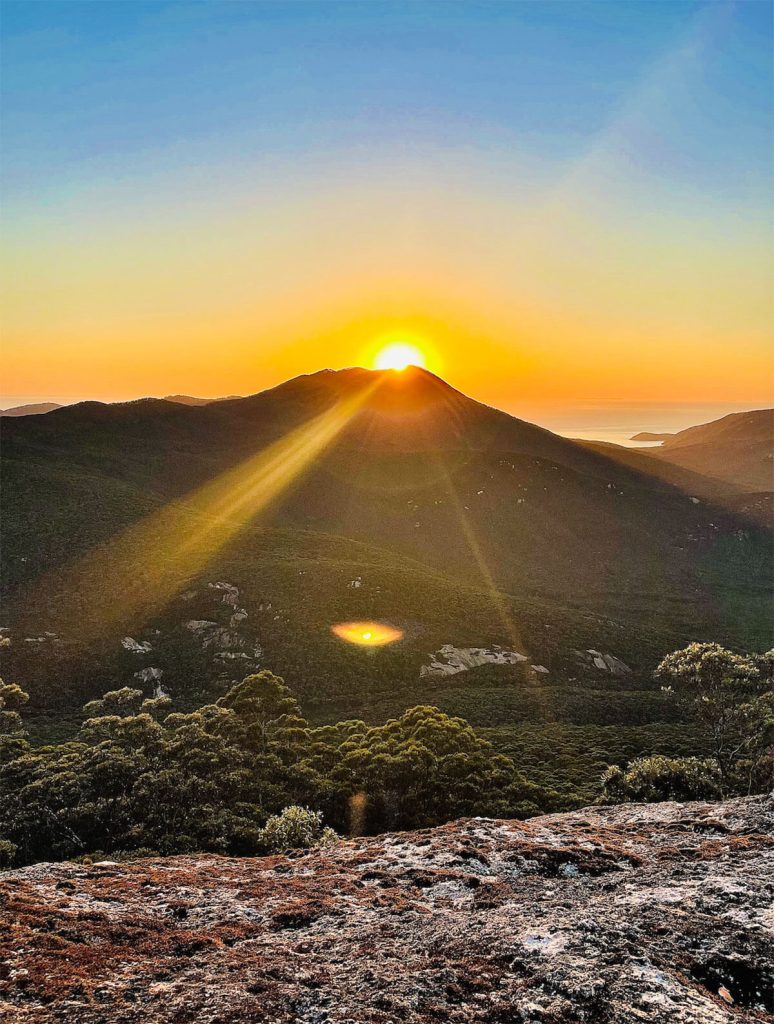
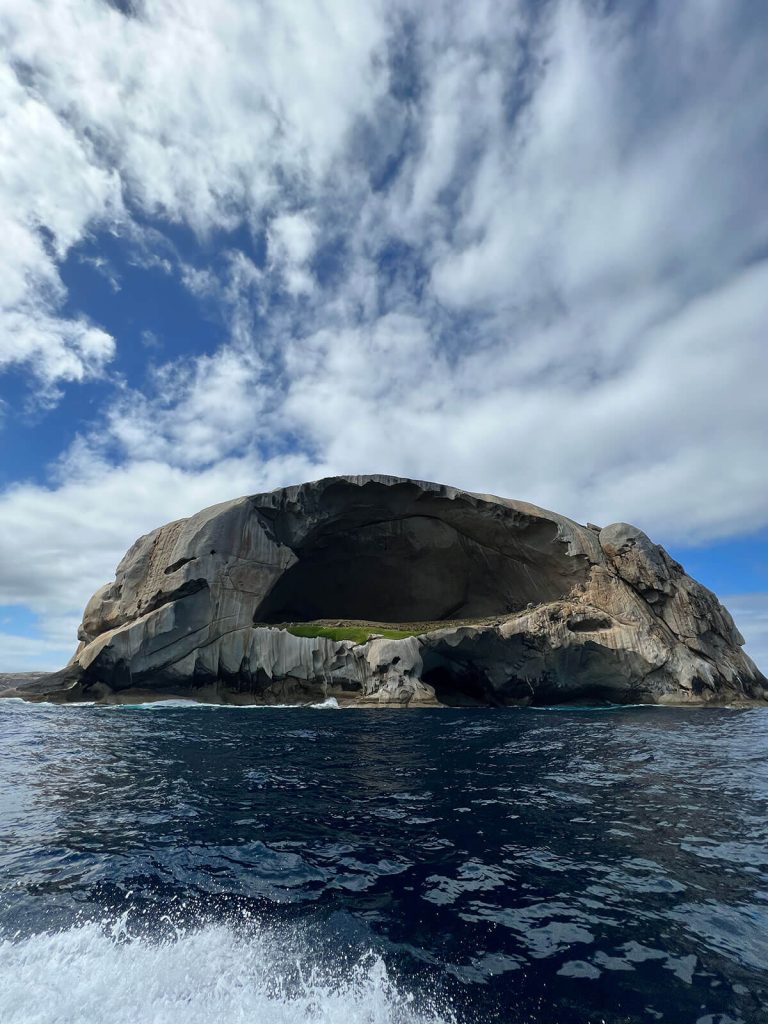
Merimbula is a charming place ideal for engaging in water activities thanks to its lake, while Pambula and its beach of the same name are perfect for a stroll along the lagoon. Pambula gets its name from “panboola,” which means “twin waters” in Aboriginal language. The origin of this village surrounded by water is very ancient.
The region’s must-sees
Firstly, a culinary must-try: local oysters. These two closely linked villages boast the highest concentration of oyster lakes in Australia.
Next, take the 5-kilometer Merimbula-Pambula Beach Walk. This coastal walk with sea views allows you to connect the village of Merimbula to Pambula. During the summer season, it is also possible to kayak or paddle.
For nature lovers and hikers, don’t miss the Eden region bordering these two villages. Indeed, this region is the perfect place to observe whales from September to November. As the third deepest port in the Southern Hemisphere, many fishermen jostle to catch their fresh fish.
To learn more about the region’s customs and marine creatures, especially killer whales, visit the Eden Killer Whale Museum.
Often described as a true paradise on Earth just 3 hours south of Sydney, Jervis Bay is listed in the Guinness World Records thanks to Hyams Beach and its dazzlingly white sand!
There are numerous opportunities in Jervis Bay for lovers of Australian wildlife:
Start from Lister Crescent on the Hyams Beach Trail and have the chance to observe Pennant’s parrots.
The Booderee National Park offers its fair share of encounters with kangaroos during your evenings at the Cave Beach campground. Cave Beach is also a proper beach that boasts a spectacular cave. In this park, close to the ruins of Cape St Georges Lighthouse, you can observe whales from May to June and from September to November.

Kangaroo Valley and the surrounding areas
The Kangaroo Valley. Often overlooked by tourists, Australians nevertheless consider it the most beautiful valley in the state of New South Wales. Nature reigns supreme here: forests, waterfalls, and wildlife. However, don’t be intimidated by this wilderness because it is also a place renowned for its food, especially its cheese and wine, which will delight any Francophile.
As you leave the valley, you can stop in the village of Kiama, known for its geyser, the Kiama Blowhole, which rises up to 25 meters high. In the area, you’ll also have a view of the Kiama Lighthouse and the opportunity to embark on the Kiama Coast Walk.
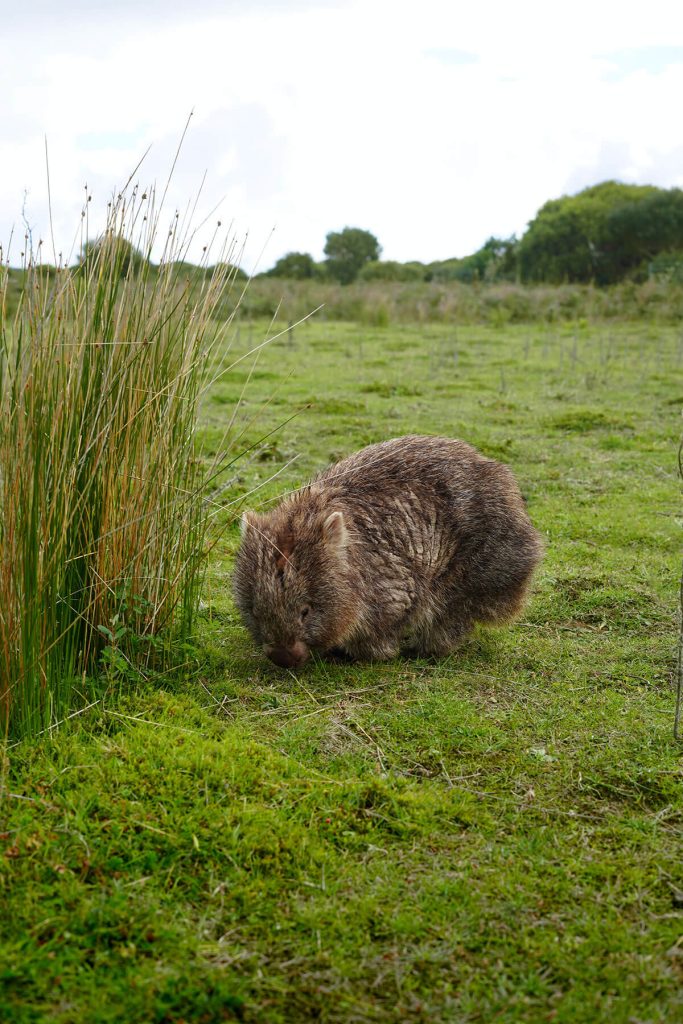
Just a 45-minute drive south of Sydney, explore the Royal National Park, a coastal nature reserve that offers numerous hiking trails. We recommend the “Figure 8 Pool” hike with its incredible naturally formed pool in the shape of an eight. Before embarking on this hike, be vigilant and check the tide level. If it’s too high, the location will be inaccessible to you and become dangerous.
In the same park, you can also hike to the Wedding Cake rock formation.
It’s time to return your house on wheels
Sydney CBD is filled with immense modern and historical buildings. The Sydney Opera House is, of course, a must-visit. Located right next to the Royal Botanic Garden, you can reach it by strolling along the bay.
It’s also impossible to miss the famous Harbour Bridge, a significant steel arch bridge that allows pedestrians, vehicles, and trains to cross Sydney Harbour. Visible from numerous viewpoints, especially from The Rocks neighbourhood, we recommend admiring it when it lights up at nightfall… it’s even more beautiful.
Martin Place is at the heart of Sydney’s downtown and Central Business District
Facing Town Hall Station is the Queen Victoria Building (QVB), a historic building dating back to 1898. This building is a large shopping center with numerous shops and dining options.
Looking up at the sky, you’ll see the Sydney Tower Eye, an observation tower located in downtown Sydney. It’s the tallest tower in the city, located in the Westfield shopping center. To access the top, you take an elevator from the shopping center and enjoy a 360-degree panoramic view.
Right next to Museum Station is Hyde Park, the oldest public park in Australia. It’s a large 16-hectare green space, perfect for strolling or picnicking in this shaded park.
On the harbour of Sydney Bay, you’ll discover the vibrant Darling Harbour district. A modern area with many tourist attractions. This area is lively day and night: stroll along the docks and admire the incredible skyscrapers of Sydney. In the evening, numerous pubs and bars liven up this area.
Sydney’s Chinatown is located just after Darling Harbour. It’s a long street filled with restaurants. Down the street, you’ll come across the famous Paddy’s Market, a massive covered market. Paddy’s Market is a must-visit in Sydney. Here you’ll find numerous souvenir shops at unbeatable prices.
A touch of nature in the middle of the city? It’s entirely possible in Sydney! Take a stroll through the Royal Botanic Garden, Sydney’s botanical garden.
The Rocks is the oldest neighbourhood in the city of Sydney, located just below the Harbour Bridge and west of Circular Quay station. It’s a lively and pleasant place to visit.
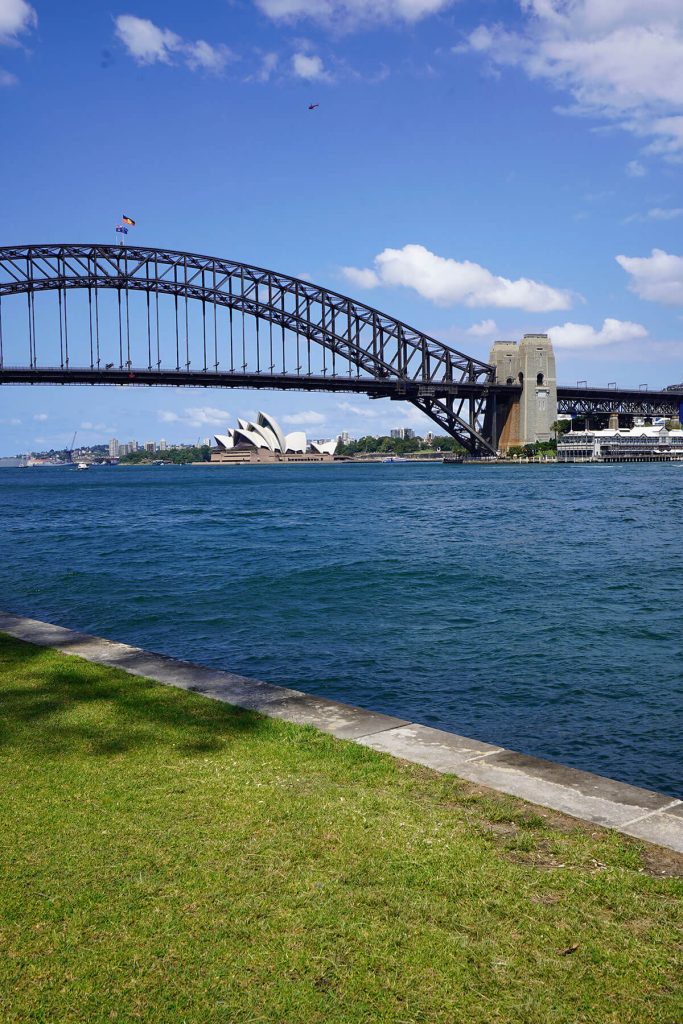
Looking for the perfect van for your next adventure? Look no further than Vanz Travel! We offer an extensive range of campervan rentals in Australia and New Zealand, ensuring that you’ll find the ideal vehicle to suit your needs and budget.
Copyright Vanz Travel Pty Ltd, all rights reserved.